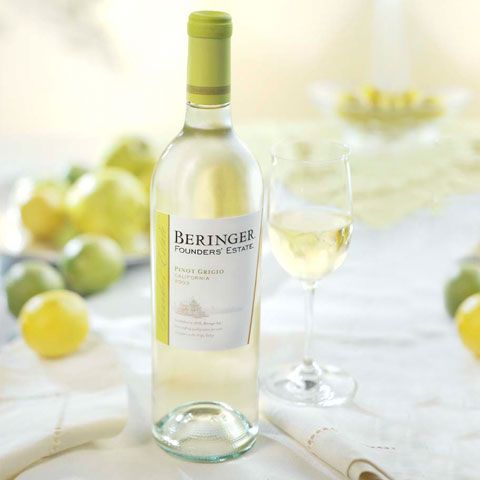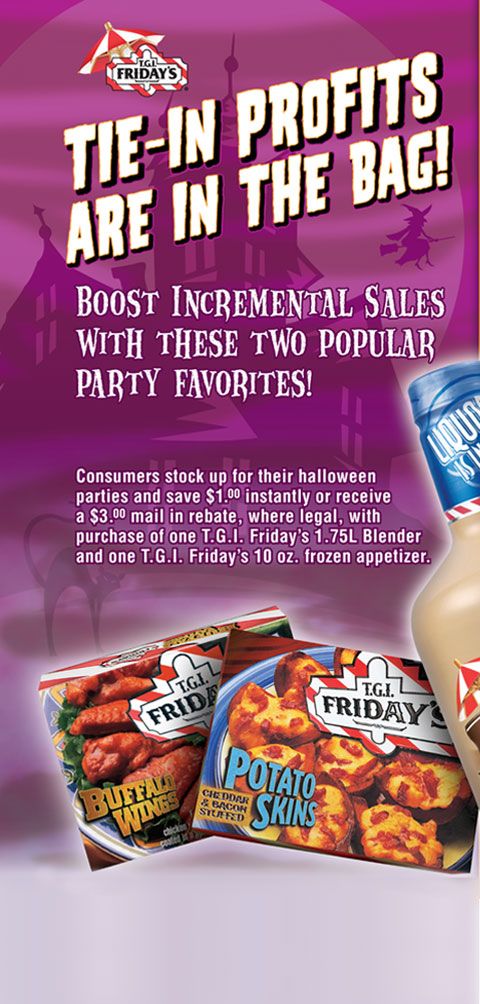Tie-Ins For Alcohol Products

When offering unique promotions by state, especially for tie-in promotions for alcohol, companies must navigate a complex landscape of legal, cultural, and market dynamics. The strategy involves tailoring promotions to comply with local laws and regulations, while also aligning with consumer preferences and brand objectives.
Let's take a look at how companies can benefit by partnering with others when promoting alcohol products.

State By State Knowledge
Here are key components of a successful strategy for state-specific alcohol tie-in promotions:
1. Legal Compliance
- Understand Local Regulations: Each state, particularly control states, has its own set of laws regarding alcohol promotion, distribution, and sales. It's crucial to understand these regulations to ensure that your promotions are legally compliant. This includes rules about advertising, discounts, and giveaways.
- Work with Legal Experts: Consulting with legal experts who specialize in alcohol laws in each state can help navigate the complexities and avoid potential legal issues.
2. Market Research
- Identify Consumer Preferences: Conduct market research to understand the preferences and behaviors of consumers in different states. This includes preferred types of alcohol, consumption patterns, and interests that can be leveraged in tie-in promotions.
- Analyze Competition: Understand what competitors are doing in terms of promotions in different states. This can help identify gaps in the market and opportunities for unique tie-ins.
3. Customized Promotions
- Tailor Promotions to Local Tastes and Interests: Customize your promotions to align with the local culture, interests, and preferences. For example, tie-ins with local sports teams, events, or festivals can resonate well with the local audience.
- Consider Local Partnerships: Partner with local businesses or brands that have a strong presence or relevance in specific states. This can enhance the appeal of the promotion and provide mutual benefits.
4. Strategic Distribution
- Optimize Distribution Channels: Depending on the state's regulations, determine the most effective distribution channels for your promotional materials and products. This might involve direct distribution in control states or working with local retailers and distributors in license states.
- Digital and Social Media Engagement: Use digital platforms and social media to promote your tie-ins, targeting specific state audiences with tailored messages. Ensure compliance with digital advertising regulations for alcohol.
5. Continuous Evaluation and Adaptation
- Monitor Performance: Continuously monitor the performance of your promotions in different states, collecting data on sales, engagement, and customer feedback.
- Adapt Strategies: Be ready to adapt your promotional strategies based on performance data and changing market or regulatory conditions. This could involve tweaking the promotion, changing partners, or trying different marketing channels.
Challenges and Considerations
- Regulatory Changes: Stay informed about changes in alcohol regulations in different states, as these can impact the feasibility and legality of planned promotions.
- Cultural Sensitivity: Be mindful of cultural differences and sensitivities in different states to ensure that promotions are received positively.
- Resource Allocation: Strategically allocate resources to ensure that state-specific promotions are cost-effective and yield a positive ROI.
By focusing on legal compliance, market research, customization, strategic distribution, and continuous evaluation, alcohol brands can effectively navigate the complexities of offering unique tie-in promotions by state, maximizing engagement and sales while adhering to local regulations.
Next Up, Let's Define A Control State
Control states, also known as "alcohol beverage control" (ABC) states, are those in which the state government has a monopoly over the wholesaling and/or retailing of some or all categories of alcoholic beverages, such as distilled spirits. This means the state government, through a designated agency, controls the sale, and often the distribution, of alcohol within its jurisdiction. The specifics of this control can vary significantly from one state to another, with some states operating government-run liquor stores, while others may control the distribution but allow private retailing under strict regulation.
Overview of Control States
In April 2023, there were 17 control states in the United States. These states implement control for various reasons, including:
- Regulating Consumption: By controlling the sale of alcohol, states aim to regulate and potentially reduce alcohol consumption, contributing to public health and safety.
- Generating Revenue: Control states generate significant revenue from the sale of alcohol, which can be used to fund state programs, including education, health services, and alcohol abuse prevention and treatment programs.
- Preventing Underage Drinking: State control allows for stricter enforcement of laws regarding the sale of alcohol to minors.
- Ensuring Quality and Safety: By regulating distribution and sale, control states can ensure the quality and safety of alcoholic beverages sold within their borders.
How Control States Operate
- Wholesaling and Retailing: In some states, the government controls both the wholesale and retail levels of alcohol distribution. This can include operating state liquor stores where consumers must purchase their spirits.
- Licensing: In states that allow private retailing, the government agency typically oversees licensing of retailers, ensuring they comply with state laws and regulations.
- Pricing: Control states set the prices for alcoholic beverages, which can include markups to generate state revenue. Pricing policies can also aim to discourage excessive alcohol consumption.
- Product Selection: The state has control over which alcoholic beverages are available for sale, which can affect the variety and availability of products.
Advantages and Disadvantages
Advantages:
- Consistent regulation and enforcement across the state.
- Potential for higher state revenue directly from alcohol sales.
- Greater control over alcohol distribution can help address public health objectives.
Disadvantages:
- Limited selection and availability of alcoholic beverages for consumers.
- Potential for higher prices due to state-imposed markups.
- Inefficiencies and inconveniences associated with government control and operation of retail outlets.
Control state policies are often subject to debate, with proponents arguing they provide significant benefits in terms of regulation, revenue, and public health, while critics point to the drawbacks of limited selection, potential for higher prices, and the inefficiencies of state-run systems
Let's Define What A Tie-In Means
A tie-in, in the context of brands, refers to a strategic partnership where two or more brands collaborate on a marketing campaign, product, or service that leverages the unique strengths and audiences of each partner. These collaborations can take various forms, such as co-branded products, joint promotions, event sponsorships, or cross-promotional advertising campaigns. The idea is to create synergy where the tie-in adds value to both parties involved, appealing to the combined customer base of the brands.
Benefits of Brand Tie-Ins
- Expanded Audience Reach: Each brand gets access to the other’s audience, potentially increasing their customer base and market exposure.
- Shared Marketing Costs: Collaborating brands can share the financial burden of marketing campaigns, making high-impact promotions more cost-effective.
- Enhanced Brand Image: Association with another brand, especially one that has a positive reputation or is perceived as premium, can enhance a brand's image and perceived value.
- Increased Sales and Revenue: Effective tie-ins can drive sales by offering customers something unique that they can’t get elsewhere, thus boosting revenue for both brands.
- Cross-Sector Appeal: Brands from different sectors can attract customers who might not have been reached otherwise, tapping into new markets and opportunities.
- Innovation and Creativity: Working with another brand can lead to innovative products or marketing strategies that a brand might not have developed on its own.
Disadvantages of Brand Tie-Ins
- Brand Misalignment: If the brands don’t share similar values or target markets, the tie-in might confuse customers or dilute brand identities.
- Risk of Negative Association: If one brand faces a scandal or negative publicity, it can adversely affect the perception of the partner brand.
- Divided Attention and Resources: Managing a tie-in campaign requires resources and attention that might have been allocated to other marketing or development efforts.
- Potential Customer Backlash: Some customers might not appreciate the partnership, especially if they are loyal to one brand and have negative perceptions of the other.
- Complex Coordination: Coordinating marketing strategies, product development, and distribution between two or more companies can be complex and time-consuming.
- Revenue Sharing: The financial benefits of the tie-in need to be shared, which might result in lower profits than if a brand had pursued a solo initiative.
Despite these disadvantages, when executed well and with the right partner, brand tie-ins can significantly enhance market presence, customer engagement, and revenue streams for all parties involved. The key to a successful tie-in is ensuring that the partnership is strategically aligned, with clear benefits to both brands and their customers.
Questions To Help When Developing A Tie-In
Creating an engaging and effective tie-in program for alcohol products involves understanding your target audience, the unique aspects of your products, and the broader trends in the industry. Here are three questions to help guide the development of your article:
-
Who is your target audience, and what interests them?
- Understanding your target audience's demographics (age, gender, income level, interests, etc.) is crucial. Knowing what appeals to them outside of alcohol (such as music, sports, fashion, sustainability, etc.) can help in identifying potential tie-in opportunities that resonate.
-
What are the current trends in the alcohol industry, and how can they inform potential tie-ins?
- Are there emerging flavors, cocktail trends, or consumption patterns (like the rise in non-alcoholic or low-alcohol beverages) that can inspire innovative tie-ins? For example, partnering with popular events or leveraging technology for augmented reality experiences.
-
How can your tie-ins reflect or enhance your brand's values and identity?
- How do you want your brand to be perceived, and what kinds of partnerships or promotions can reinforce that image? Whether your brand emphasizes luxury, sustainability, craftsmanship, or fun, the tie-ins should align with these values to maintain a cohesive brand identity.
These questions aim to align your tie-ins with both your audience's interests and your brand's strategic objectives, ensuring they are relevant, engaging, and effective.
In Conclusion
Navigating the intricate landscape of state-specific tie-in promotions for alcohol requires a meticulous and strategic approach. The key to success lies in balancing legal compliance with innovative marketing strategies that resonate with local audiences. By deeply understanding the unique regulatory environments of each state, brands can craft promotions that not only comply with the law but also captivate and engage diverse consumer bases.
Customization plays a crucial role in this strategy, allowing brands to connect with consumers on a more personal and relevant level. Tailoring promotions to reflect local tastes, interests, and cultural nuances can significantly enhance the effectiveness of marketing efforts. Moreover, leveraging local partnerships and optimizing distribution channels can amplify the reach and impact of promotional campaigns, creating a win-win situation for both brands and consumers.
However, the dynamic nature of legal regulations and consumer preferences requires brands to remain agile and responsive. Continuous monitoring, evaluation, and adaptation of promotional strategies are essential to navigate the evolving market and regulatory landscape successfully. By doing so, brands can not only ensure compliance and mitigate risks but also seize opportunities to innovate and stand out in the competitive alcohol industry.
Ultimately, state-specific tie-in promotions for alcohol offer a valuable opportunity for brands to deepen consumer engagement and drive sales. When executed with careful planning, creativity, and sensitivity to local dynamics, these promotions can significantly contribute to building brand loyalty and establishing a strong market presence across diverse regions.
Our Work

In-Store Deliverables
In-store deliverables can take many forms. Case cards, pallet wraps, couponing, etc.

Tie-Ins
Tie-ins leverage the strengths of each brand to increase sales and customer loyalty. By combining two products that are often used together or consumed at the same time, companies can increase the perceived value of both products and attract new customers who may not have been interested in one product alone.

Trade Brochure
A significant task to act as the hub of creative and trade related activities for all North American spirits whosalers.
- Copyright © 2022 Linear SC, Inc. | Website Design, Development & Support: PowerPro Live